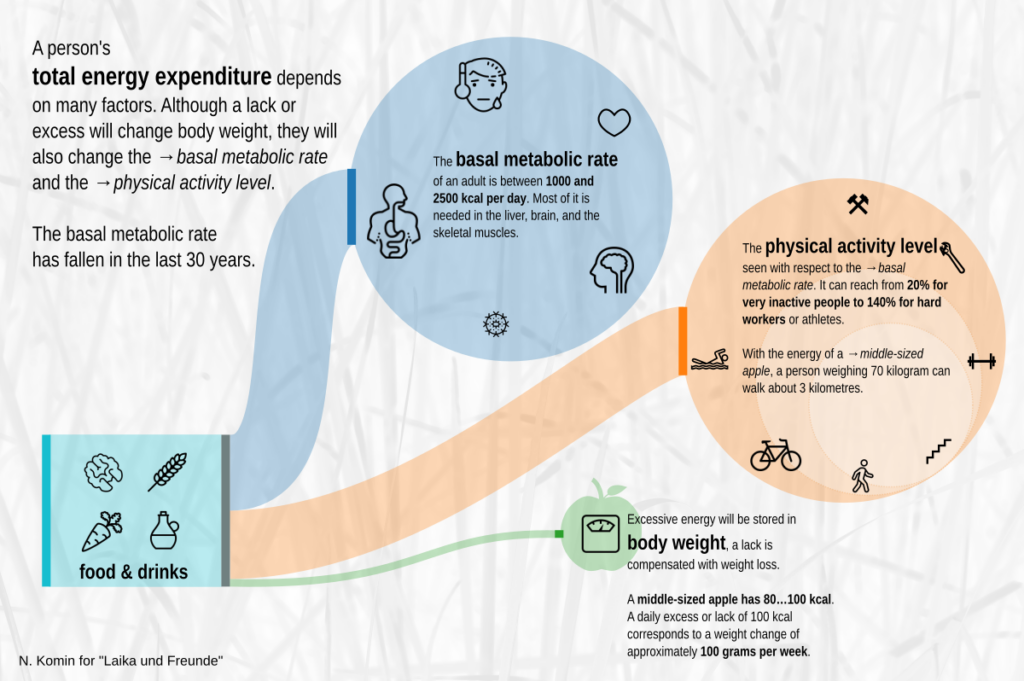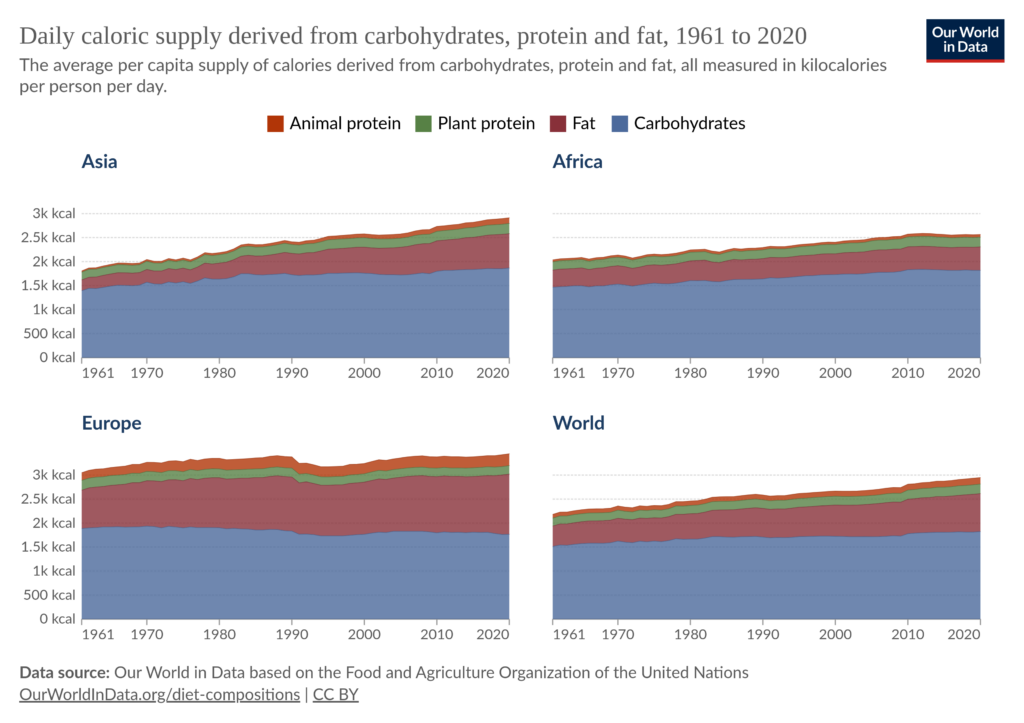
People are getting heavier. This trend has been stable around the world for at least thirty years, although it is already easing in some areas. Gaining weight means that more energy is taken up than is being used.
Although we indeed eat more today than we did thirty or a hundred years ago, this is not the only cause for the gain in weight. In fact, the energy expenditure has decreased not because we are less active but because the basal rate –the energy needed to maintain ourselves at rest– has fallen.
Thousands of test subjects have a decreased demand
This is the conclusion drawn by eighty international researchers after evaluating several studies. They collected the data on the energy expenditure of thousands of test subjects. And this has consistently decreased. However, the studies primarily considered the overall expenditure, which can decrease when we reduce our activity levels.
But to measure the basal energy consumption is complicated, so most of these studies did not have that information. But some did. Looking at those, the researchers were in for a surprise: overall energy expenditure is lower because of a reduced basal metabolic rate. As John Speakman, one of the authors, writes us: “The energy expenditure on activity if anything, has gone up. This is likely because leisure time activity has increased while workplace activity declined.”
To maintain our main bodily functions like regulating body temperature, digesting food, and having the immune defense up, we now need around 80 calories less per day than we did a hundred years ago. This is how much energy there is in a medium-sized apple. But how can something as central as basic energy requirements change in such a short time?

What has changed?
Various possibilities are under discussion: changed living comfort, less inflammation, and different eating habits.
For example, if it is too cold or warm, the body has to work harder to maintain body temperature. But heaters and air conditioners shift the temperature indoors in our favor. Their increasing prevalence could, on the whole, have relieved our bodies of some work.
At the same time, people’s health has improved such that chronic inflammations are less frequent than they used to be. This comes mainly through the use of antibiotics, better oral hygiene, and fewer cases of infectious diseases such as tuberculosis. That could also reduce basal metabolic rate.
The authors of the study offer a third explanation: changed eating habits. The idea is that the composition of fats in our diets influences our metabolism. A hundred years ago, we consumed 90% animal fats like butter or lard. Today this number has fallen to less than 15% and this shift in favor of vegetable oils has caused the proportion of polyunsaturated fatty acids to rise dramatically. The effect could be an altered metabolism, such that basal rate decreases.
The researchers don’t name the exact mechanism behind their proposed relation. They do, however, support it experimentally. A few dozen mice had to satisfy half of their energy needs with fat from just one source over four weeks. The fats in the various mouse groups were butter, lard, fish oil, and vegetable oils from plants like peanuts, olives, or cocoa. Four weeks in the life of a mouse are supposed to correspond to about three and a half human years. And what was the result after this period? Consuming more saturated fatty acids meant higher basal metabolic rates. This supports the idea that changing eating habits may have reduced humans’ baseline consumption but it is still unclear whether the result can be easily transferred from mice to humans.
Food and weight
Of course, the lower basic requirements are not solely responsible for heavier people. People also eat more. How much everybody eats is not easy to answer from a global perspective. Surveys are usually inaccurate. However, data by the Food and Agriculture Organization shows that food availability has improved overall. Although one in ten people on earth is still affected by hunger, every person in Asia and Europe has 12% more calories available today than in 1960. On average! This shows that hunger is primarily a distribution problem. But the calories still end up somewhere: ultimately in an increased average weight.
Good to know
A lower basal rate is also noticeable indirectly. In 1851, Carl Reinhold August Wunderlich measured the body temperatures of thousands of Leipzig residents. He is the one who first noted a “normal temperature”: just under 37°C. Of course, this varies from person to person and decreases with age. But towards the end of the 20th century doubts about this value appeared. A closer look at measurements from different decades shows that “normal temperatures” have actually decreased. Regardless of measurement method, age, or origin, human bodies have become about 0.03°C cooler every ten years. Lower body temperature means less energy for heating.
©Niko Komin (@kokemikal)

